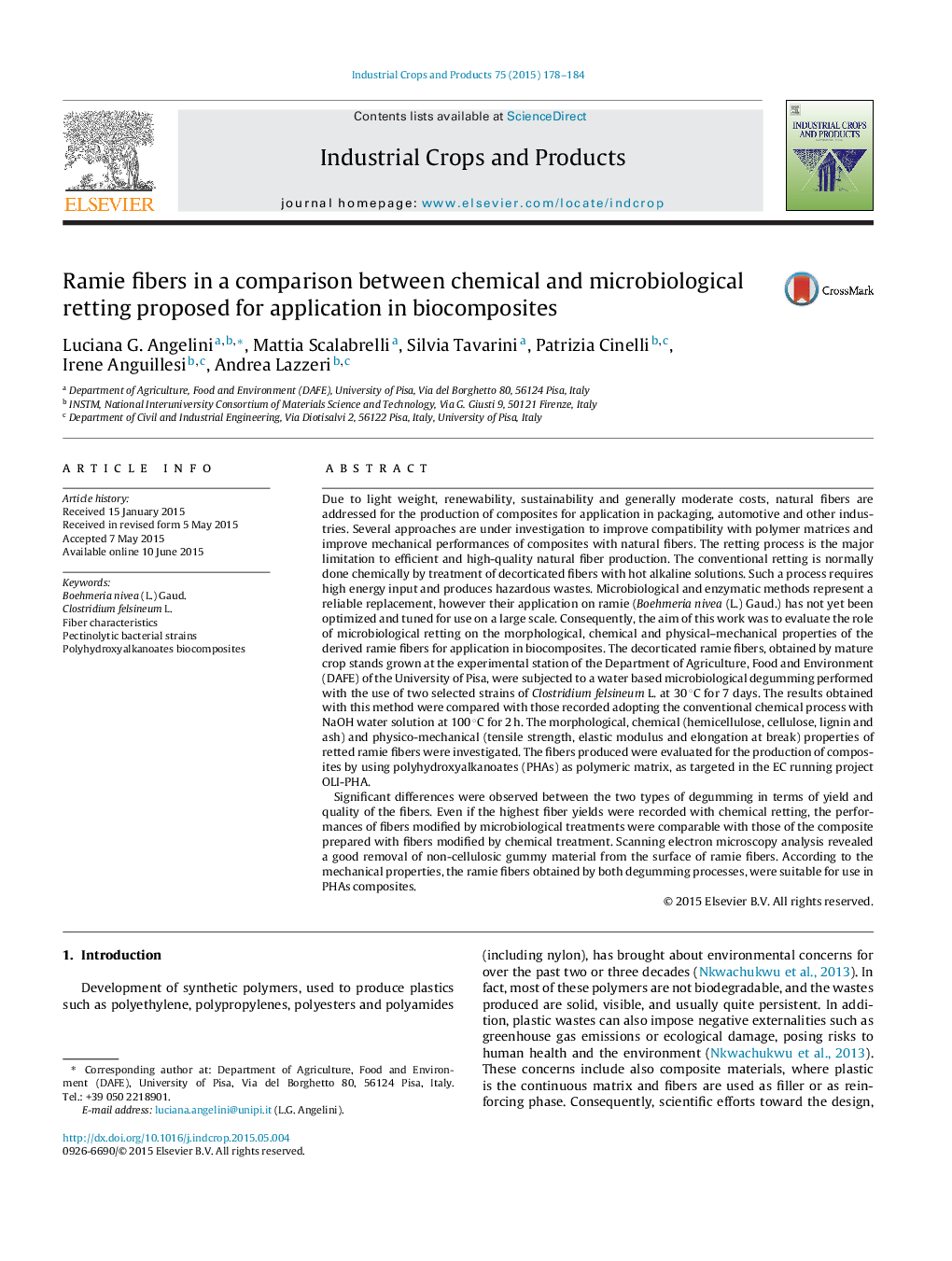| Article ID | Journal | Published Year | Pages | File Type |
|---|---|---|---|---|
| 4512841 | Industrial Crops and Products | 2015 | 7 Pages |
Due to light weight, renewability, sustainability and generally moderate costs, natural fibers are addressed for the production of composites for application in packaging, automotive and other industries. Several approaches are under investigation to improve compatibility with polymer matrices and improve mechanical performances of composites with natural fibers. The retting process is the major limitation to efficient and high-quality natural fiber production. The conventional retting is normally done chemically by treatment of decorticated fibers with hot alkaline solutions. Such a process requires high energy input and produces hazardous wastes. Microbiological and enzymatic methods represent a reliable replacement, however their application on ramie (Boehmeria nivea (L.) Gaud.) has not yet been optimized and tuned for use on a large scale. Consequently, the aim of this work was to evaluate the role of microbiological retting on the morphological, chemical and physical–mechanical properties of the derived ramie fibers for application in biocomposites. The decorticated ramie fibers, obtained by mature crop stands grown at the experimental station of the Department of Agriculture, Food and Environment (DAFE) of the University of Pisa, were subjected to a water based microbiological degumming performed with the use of two selected strains of Clostridium felsineum L. at 30 °C for 7 days. The results obtained with this method were compared with those recorded adopting the conventional chemical process with NaOH water solution at 100 °C for 2 h. The morphological, chemical (hemicellulose, cellulose, lignin and ash) and physico-mechanical (tensile strength, elastic modulus and elongation at break) properties of retted ramie fibers were investigated. The fibers produced were evaluated for the production of composites by using polyhydroxyalkanoates (PHAs) as polymeric matrix, as targeted in the EC running project OLI-PHA.Significant differences were observed between the two types of degumming in terms of yield and quality of the fibers. Even if the highest fiber yields were recorded with chemical retting, the performances of fibers modified by microbiological treatments were comparable with those of the composite prepared with fibers modified by chemical treatment. Scanning electron microscopy analysis revealed a good removal of non-cellulosic gummy material from the surface of ramie fibers. According to the mechanical properties, the ramie fibers obtained by both degumming processes, were suitable for use in PHAs composites.
